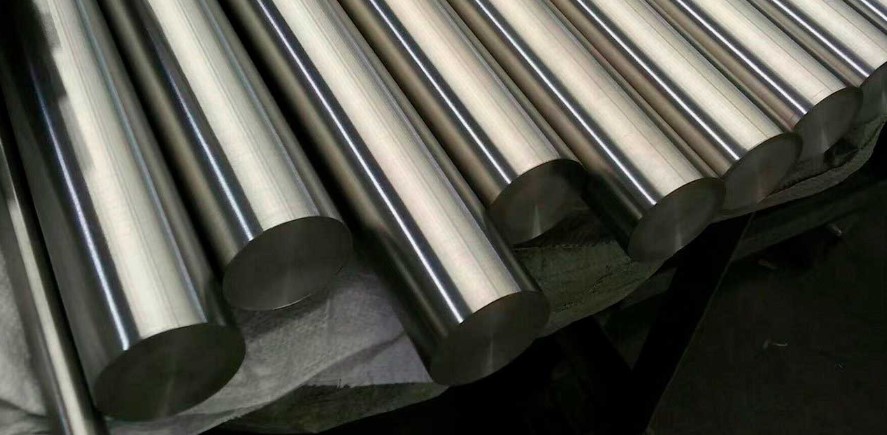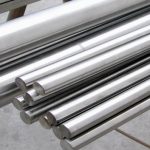
Stainless Steel 304 hex bar is a widely used material in industrial fabrication due to its excellent properties that make it ideal for a range of applications. 304 stainless steel is austenitic, meaning it has a high resistance to corrosion, good mechanical properties, and versatility in various manufacturing processes. When formed into a hexagonal bar shape, it becomes even more beneficial for specific fabrication processes.
Here are some of the key advantages of using Stainless Steel 304 hex bar in industrial fabrication:
1. Corrosion Resistance
- 304 stainless steel is highly resistant to corrosion, making it an excellent choice for applications exposed to moisture, chemicals, and harsh environments.
- It resists oxidation and corrosion from water, acids, and alkalis, which makes it suitable for industries such as chemical processing, food processing, and pharmaceuticals.
- Its corrosion resistance ensures that components made from 304 stainless steel retain their structural integrity and appearance over time, reducing the need for maintenance or replacement.
2. High Strength and Durability
- 304 stainless steel hex bars exhibit a high tensile strength, typically around 505-700 MPa (73,000-101,500 psi), and yield strength of about 210 MPa (30,000 psi), making them capable of withstanding mechanical stresses and loads.
- They are durable and can handle demanding conditions in industries such as automotive, construction, and heavy machinery fabrication.
- 304 stainless steel is also resistant to impacts, ensuring that the hex bars can endure harsh conditions without cracking or breaking.
3. Excellent Machinability
- 304 stainless steel hex bars are relatively easy to machine, especially when compared to other stainless steel alloys. This makes them ideal for precision machining and fabrication into complex shapes, sizes, and components.
- Good machinability means that 304 hex bars can be cut, drilled, threaded, and milled without excessive wear on tools, which reduces production costs and increases efficiency in manufacturing.
- The hexagonal shape allows for better handling during machining and provides ease when fastening with tools like wrenches or nuts due to its flat edges.
4. Aesthetic Appeal
- Stainless Steel 304 has a bright, shiny appearance that maintains its finish over time, which is desirable for applications where both performance and appearance are important.
- The hexagonal shape adds a unique visual element, making it particularly useful in architectural and decorative applications where the shape and finish contribute to the overall aesthetic, such as in handrails, furniture, or consumer products.
5. Non-Magnetic Properties
- 304 stainless steel is non-magnetic in its annealed condition, making it suitable for use in applications where magnetic properties could interfere with the operation of the components. This is crucial for industries such as electronics, medical devices, and aerospace, where non-magnetic materials are required for safety and functionality.
6. Heat Resistance
- Stainless Steel 304 offers good heat resistance, maintaining its strength and corrosion resistance even in environments with moderate to high temperatures (up to around 870°C or 1600°F).
- It is often used in high-temperature applications like furnaces, heat exchangers, and exhaust systems, where material integrity is essential under heat stress.
7. Formability and Weldability
- While 304 stainless steel is highly resistant to corrosion and heat, it also has good formability and weldability, making it easy to shape and join with other parts.
- 304 hex bars can be bent, cut, and welded into more complex structures without sacrificing their mechanical properties.
- This versatility in shaping makes it ideal for custom fabrication of parts that must meet specific design requirements.
8. Cost-Effectiveness
- 304 stainless steel hex bars provide a cost-effective solution when compared to higher-alloy stainless steels like 316. Although not as resistant to severe corrosion as 316, 304 offers excellent value for most industrial applications requiring high performance, without the additional cost associated with more corrosion-resistant alloys.
- In industries like food processing, construction, and automotive manufacturing, 304 stainless steel offers balanced performance at a more competitive price point.
9. Resistance to Staining and Rust
- Due to the high chromium and nickel content, 304 stainless steel is highly resistant to staining and rusting, which extends the service life of components and minimizes the need for repairs or replacements.
- This makes 304 hex bars particularly valuable in marine environments, outdoor applications, and other industries where rust and staining could reduce the component’s integrity.
10. Recyclability and Environmental Benefits
- Stainless Steel 304 is fully recyclable, contributing to sustainability in industrial manufacturing. Using 304 stainless steel hex bars helps reduce environmental impact, as the material can be melted down and reused in the production of new products.
- This aligns with growing trends in industries aiming to adopt more eco-friendly and sustainable practices.
11. Versatility in Application
- The hexagonal shape of 304 stainless steel bars offers a versatile form factor that is ideal for fasteners, machine parts, structural components, and other custom-fabricated pieces. The shape makes it ideal for use in parts that require gripping with wrenches or precision fitting with bolts, nuts, or other connecting components.
- It is commonly used in a variety of industries, including:
- Automotive: For brackets, bolts, and engine components.
- Construction: For architectural hardware, structural components, and fittings.
- Aerospace: For aircraft components that require lightweight yet strong materials.
- Manufacturing: For machine parts, shafts, and custom fabrication.
- Marine and Food Processing: For parts exposed to water or chemicals.
Conclusion
Stainless Steel 304 hex bars are a powerful material choice for industrial fabrication due to their corrosion resistance, strength, machinability, and versatility. Their unique shape and properties make them particularly suitable for high-performance applications that require precise machining, durability, and aesthetic appeal. Whether used in fasteners, machine components, architectural hardware, or custom fabrication, 304 stainless steel hex bars provide significant advantages in terms of cost-effectiveness, longevity, and performance in various demanding environments.






Leave a Reply